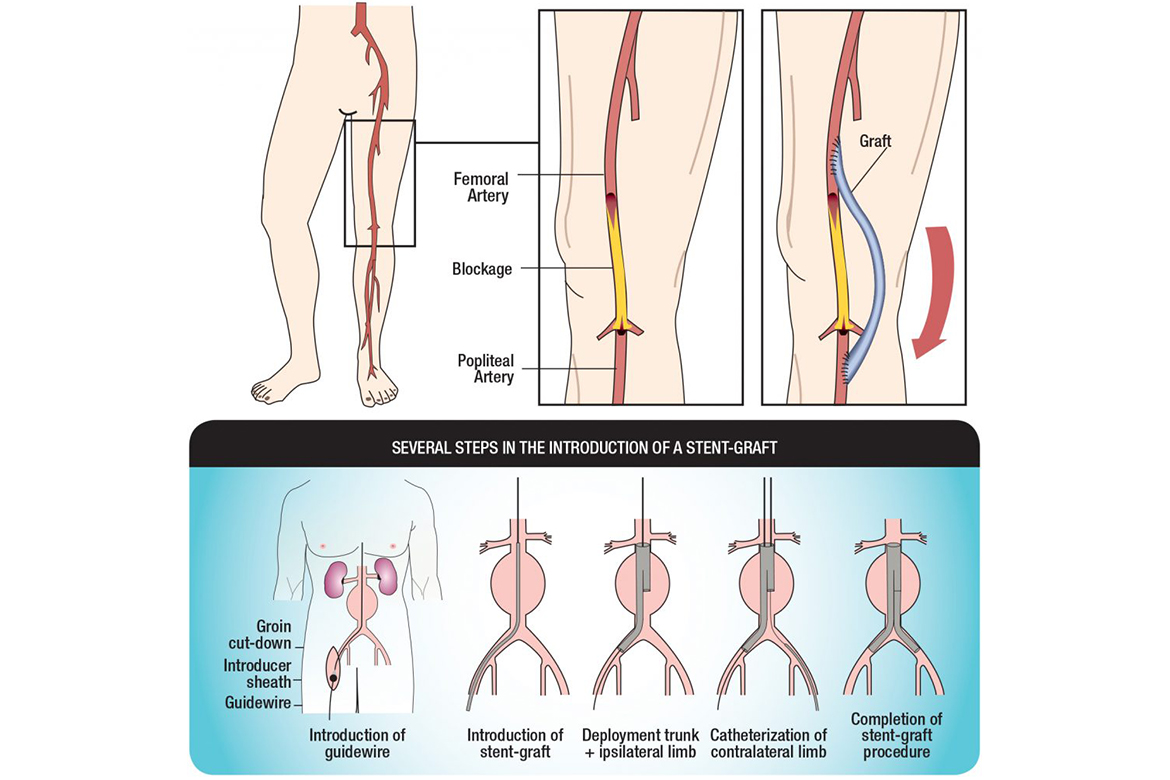Aneurysms are usually diagnosed when they rupture.
However, mortality from aneurysms can be reduced by screening high-risk individuals and treating them before they rupture.
A 52 year-old gentleman came to our Vascular Surgery Department with a painful lump behind his right knee. On the basis of his history (acute onset of claudication and rest pain, and the history of a lump behind the knee) and clinical examination (no palpable foot pulses on the right, normal foot pulses on the left, and a non pulsatile lump behind the right knee), there seemed a possibility of popliteal aneurysm. Hence, we recomended an MRI angiogram, which showed a thrombosed right-poplitealartery aneurysm.
It was decided to repair this aneurysm surgically. During surgery, the popliteal artery was ligated above and below the aneurysm, and a bypass was performed from the common femoral artery to the posterior tibial artery in the foot
using reversed long saphenous vein. The patient recovered quickly and is now claudication free.
He was investigated for aneurysm of the aorta and the opposite popliteal artery, as 60 per cent of popliteal aneurysms are bilateral. He was diagnosed with a popliteal aneurysm on the other side as well; this is due for repair soon.
An aneurysm is defined as an abnormal, permanent dilatation of a blood vessel (twice its normal size). The most common sites of occurrence, in descending order, are the abdominal aorta, the thoracic aorta, the popliteal artery, the femoral artery, the carotid artery and visceral arteries.
Aneurysms are most common in men. Risk factors are hypertension, ischaemic heart disease, diabetes, smoking and infections such as tuberculosis.
Rupture is the most common symptom and is usually fatal. Aneurysms can cause compression of surrounding structures—like the bronchus or duodenum. They can also cause ischaemia when the clot that forms in the aneurysm embolises to the distal vessels.
“15% of sudden deaths attributed to heart attacks worldwide are known to be the result of a ruptured
abdominal or thoracic aortic aneurysm.”
To prevent rupture of aneurysms, it is extremely critical to detect and treat them in their early stages. As they often have vague and nonspecific symptoms, a high index of suspicion is required.
The principle of treatment of aneurysms is to replace the aneurismal artery with a graft (dacron or vein) or, in cases that are suitable, by stenting the aneurysms via a minimally-invasive-keyhole-technique.
Complex cases such as aneurysms are best treated within a multi-disciplinary team setup. The vascular surgery team at Kokilaben Hospital includes a vascular surgeon and an interventional radiologist who are able to offer both surgical
and minimally invasive therapy. All patients are discussed within the team and the most appropriate treatment for that patient is offered.
 Back to Site
Back to Site